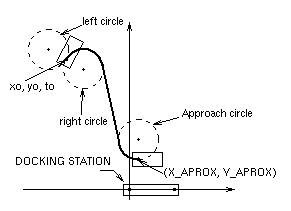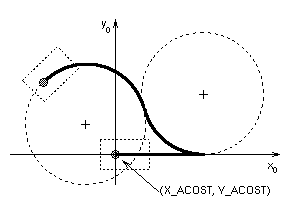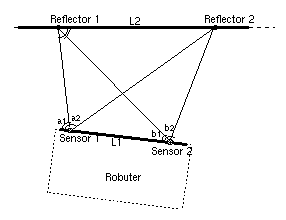
The trajectory planning and execution is divided in two different phases. The first one, approach, is responsible for driving the mobile platform to a position where it is possible to make a sensor reading. After that, the docking phase generates paths that will take the robot to it's final docking point based on the information gathered by the sensors. All trajectories are composed of line segments and arcs respecting a minimum radius of curvature.
The approach procedure is used when it is not possible to obtain a sensor reading. Therefore some knowledge of the current position and orientation (xo,yo,to) is required so that a path to a new position, where the sensors can be used, can be generated and followed. The approach point (x_aprox,y_aprox) is farther from the docking station aiming at lowerering the risk of collision due to errors in the initial estimate of position and orientation.


Example of an approach (left) and a docking trajectory (right).
The docking phase, aiming at driving the mobile platform to a close neighbourhood of (x_acost,y_acost), starts when it is possible to obtain a sensor reading. With this information, an accurate estimate of position and orientation of the mobile robot relative to the docking station is computed through triangulation and the robot is driven to the docking point. A new reading is made to ensure that the mobile platform has docked. This docking phase is repeated until a minimum error has been reached.

Triangulation scheme.
Back to Docking of a mobile platform